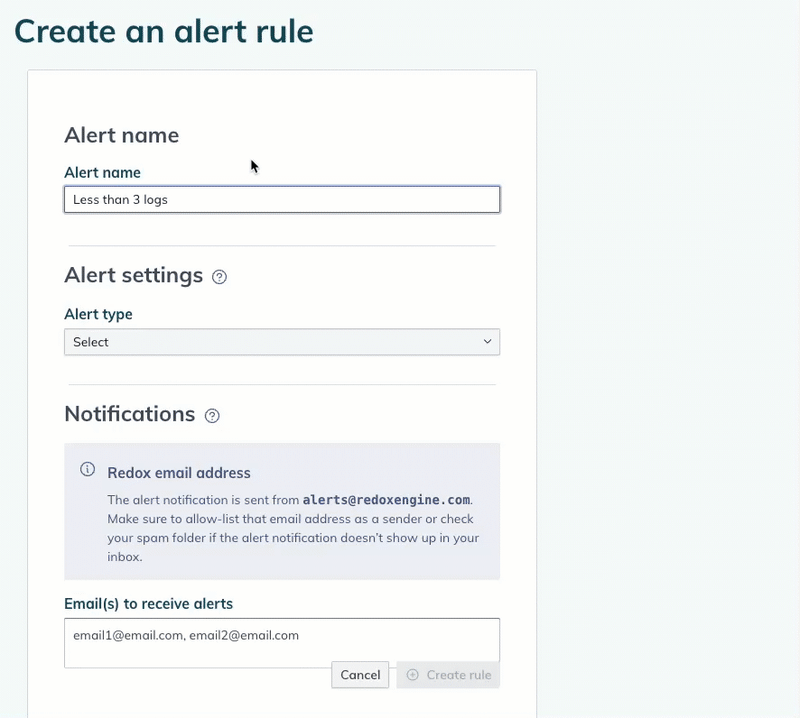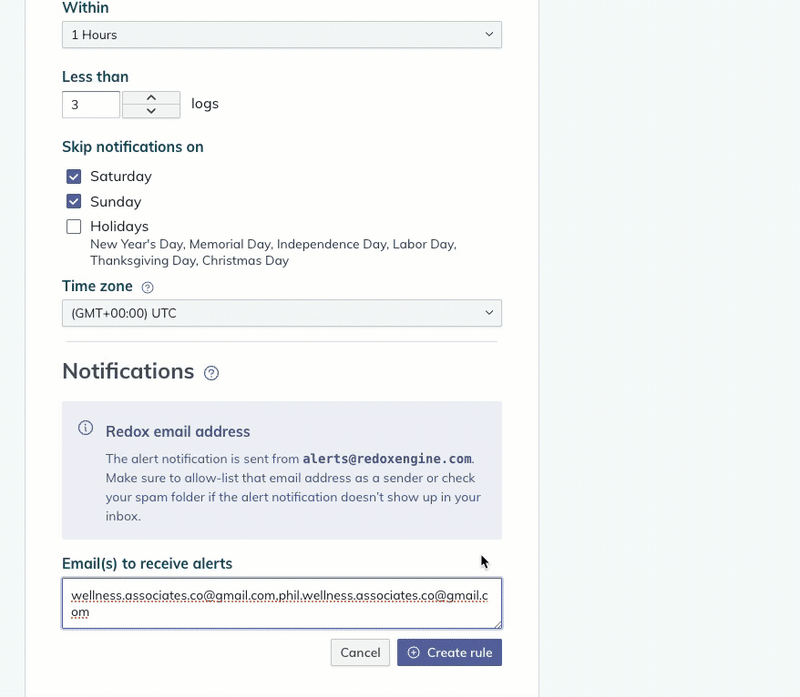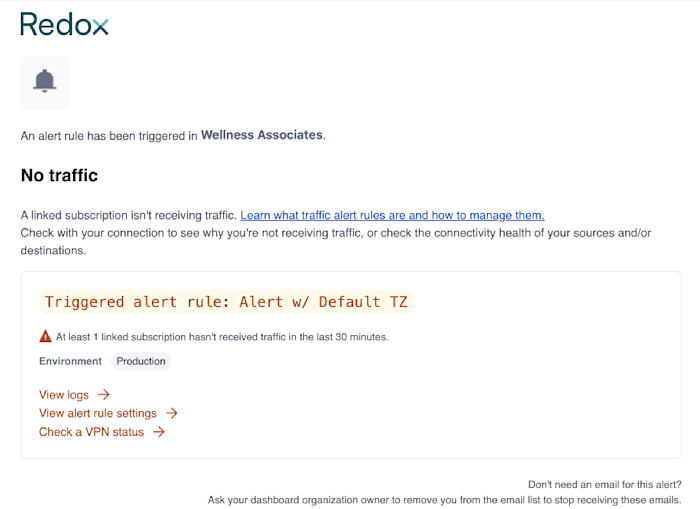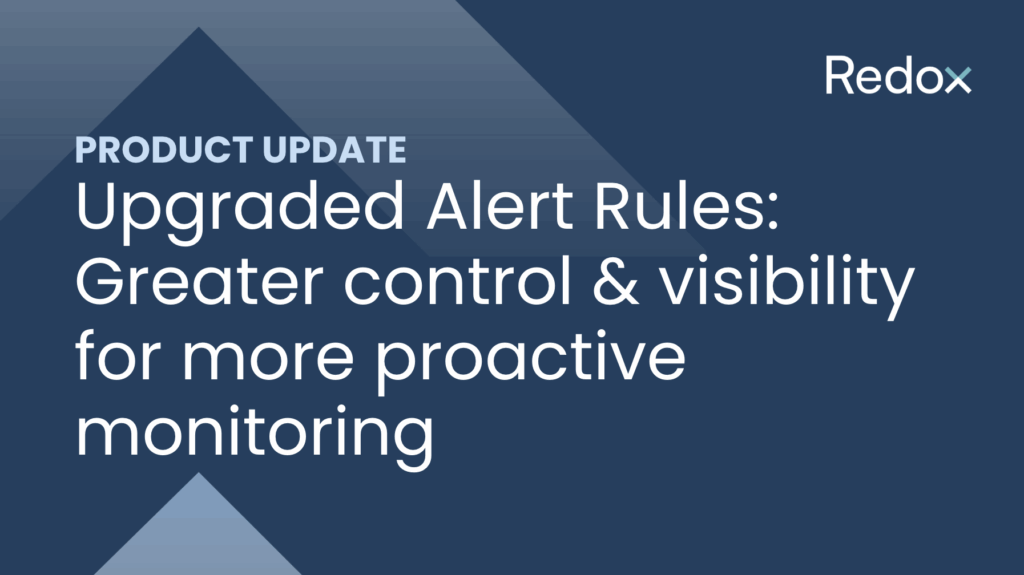Like most integration teams, checking your connection health is part of your daily workflow. It’s your job to make sure data traffic is flowing in and out of your organization as expected, and that any potential issues are flagged and resolved before a major outage occurs.
At Redox, we understand that effective data monitoring is crucial to keeping your healthcare integrations healthy and running smoothly. That’s why we’re excited to introduce improvements to our alert rules, giving you greater visibility and control to stay ahead of issues and act with confidence and speed.
To review previous alerting updates, check out Enhancing your data monitoring with updated traffic alert rules.
What’s new in alerting?
New types of alert rules
A Retry Threshold alert rule monitors the number of retries for any log in a given subscription. Users can detect when logs are continuously retrying in the queue by setting an alert that triggers when a subscription exceeds a certain number of retries. With this alert rule, customers can detect a potential data problem upstream before a log is processed and returns an error.
Example retry threshold alert rule: “Set an alert to be notified if a log retries more than 5 times.”
A Low Traffic alert rule monitors whether traffic is flowing as anticipated in a given subscription. Customers can spot traffic slowdowns and receive an alert when traffic drops below a certain threshold in a specific timeframe, allowing them to spot and resolve any issues before traffic stops completely.
Example Low Traffic alert rule: “Set an alert to be notified if I don’t see at least 10 messages come through every hour.”

New modal for unlinked alerts
Customers often create alert rules without linking them to a subscription, leaving them inactive. The new modal helps ensure alert rules get linked as soon as they’re created so customers can start monitoring connections based on the rule conditions they defined.

More context in triggered and resolved alert rule emails
We’ve updated our emails to be more informative and actionable with links to view alert settings or logs to review which conditions and subscriptions are triggering alerts.

Longer time intervals for No Traffic alert rules (coming soon)
Today, customers can configure No traffic alerts to be notified when no logs reach a terminal state (Succeeded, Filtered, or Failed) within 30 minutes to 72 hours. Soon, customers will be able to set longer time intervals (weekly, monthly, or quarterly) for No traffic alerts that match their specific workflows.
Smarter alerts, more control, and less downtime with Redox
With these alert rule improvements, you’re in the driver’s seat—staying ahead of issues and protecting your integrations from unexpected downtime or interruptions. Stay tuned as we continue to expand our toolbox, with more features designed to enhance your control and visibility over your integrations. Learn more by visiting our dev docs.
Interested in learning more about traffic alert rules? Reach out to your Technical Account Manager or Account Executive. (Not sure who that is? No worries, contact us and we’ll get you in touch with the right person.)

